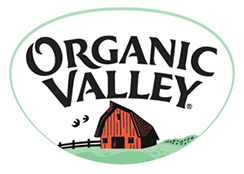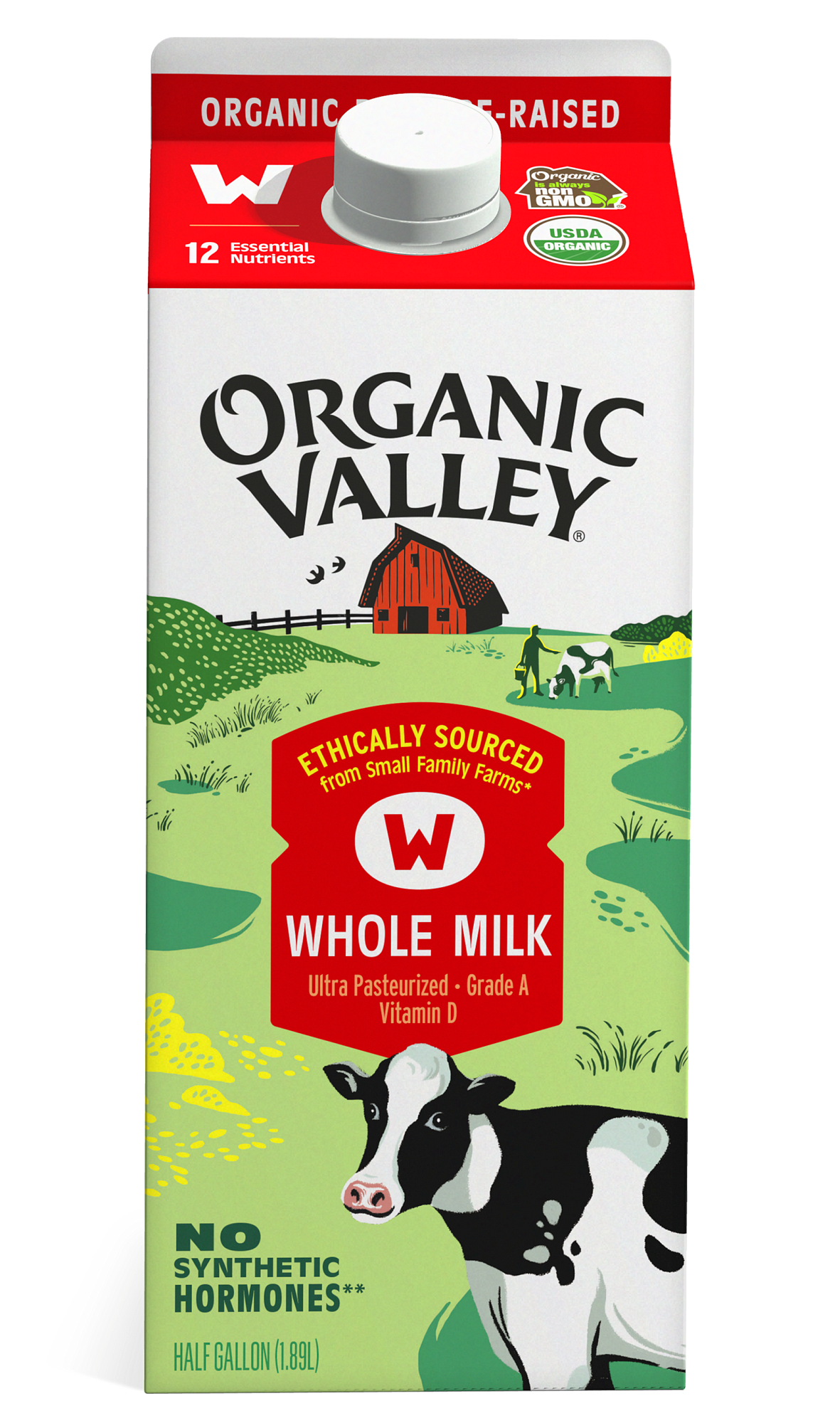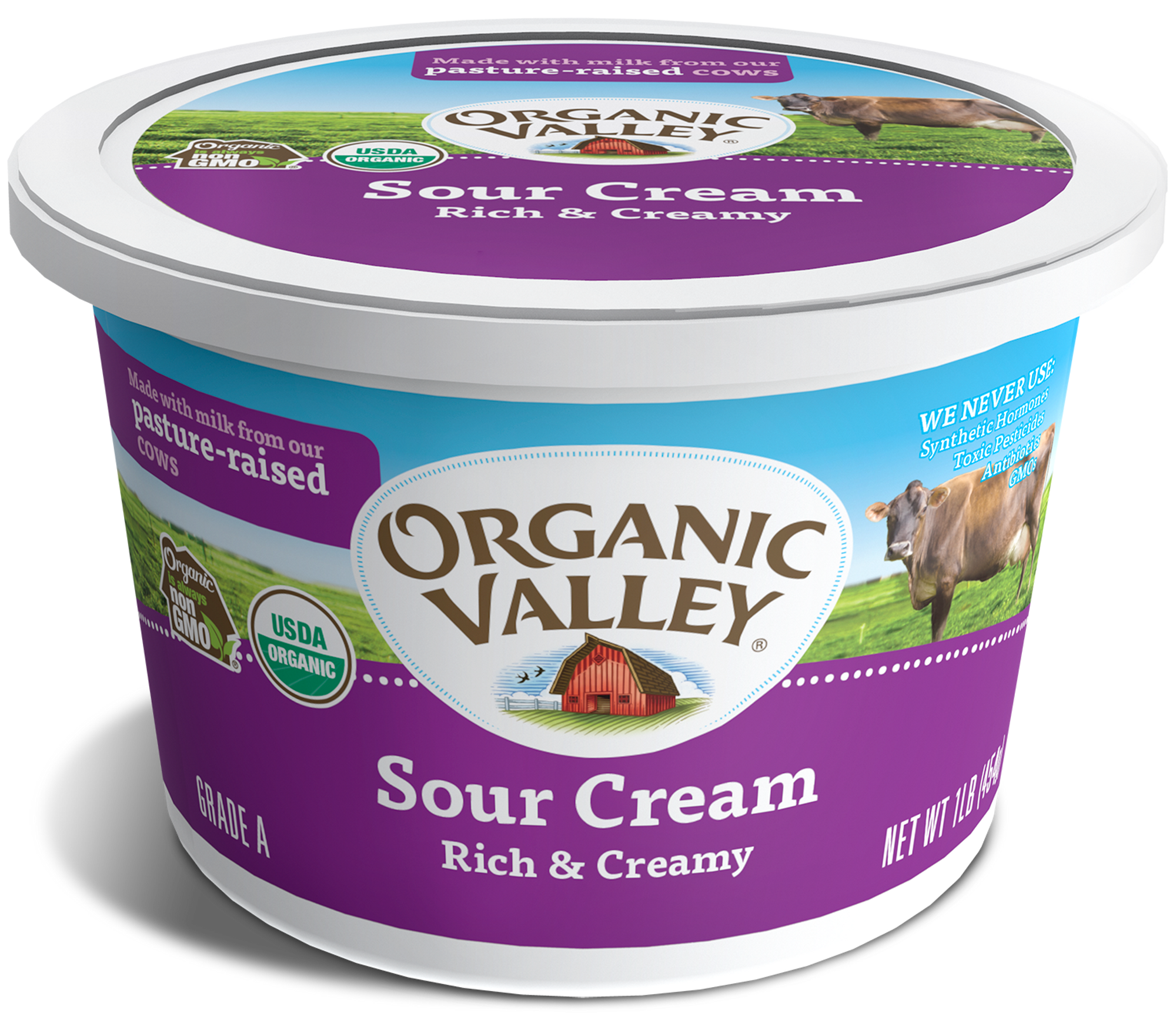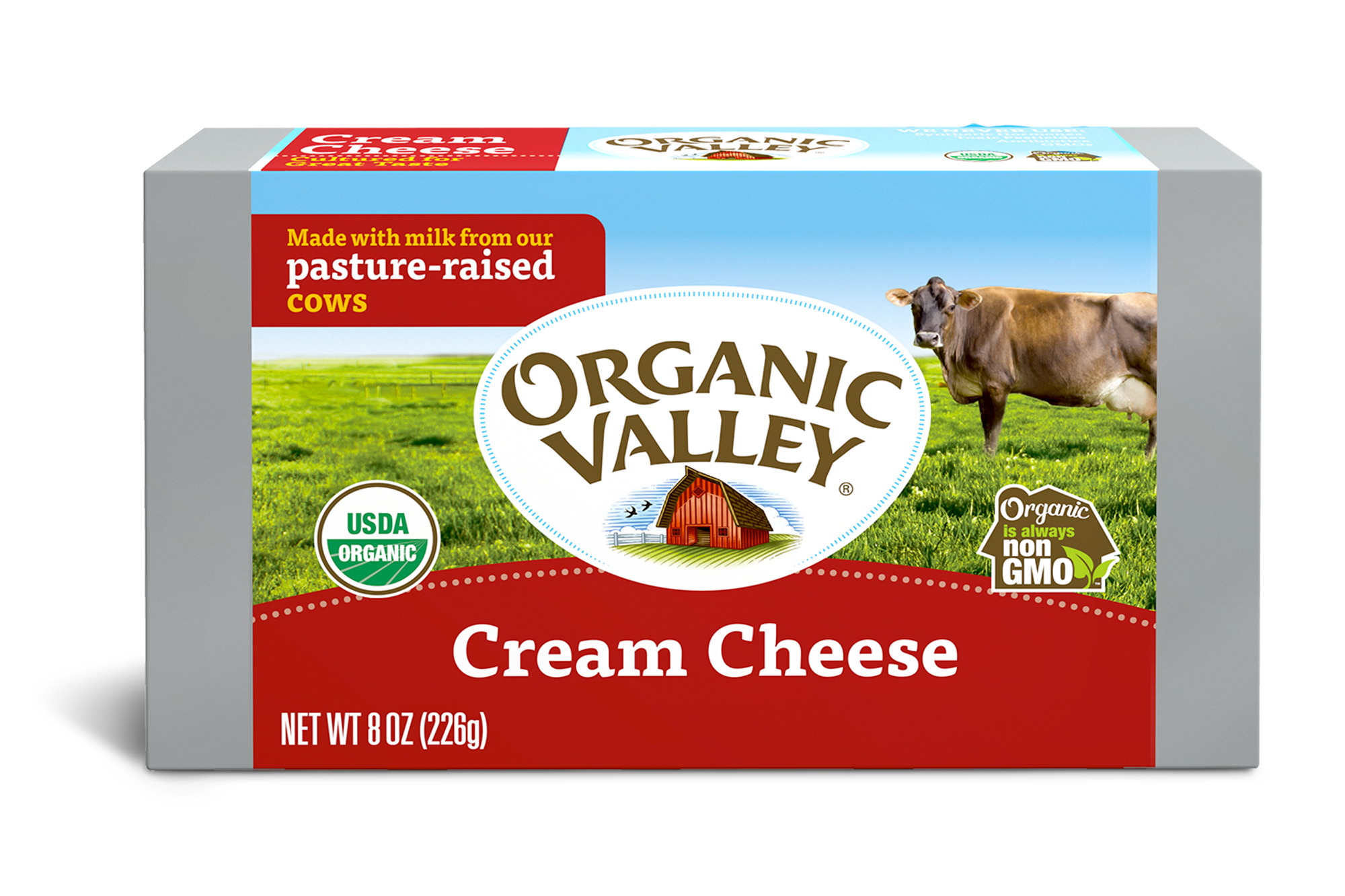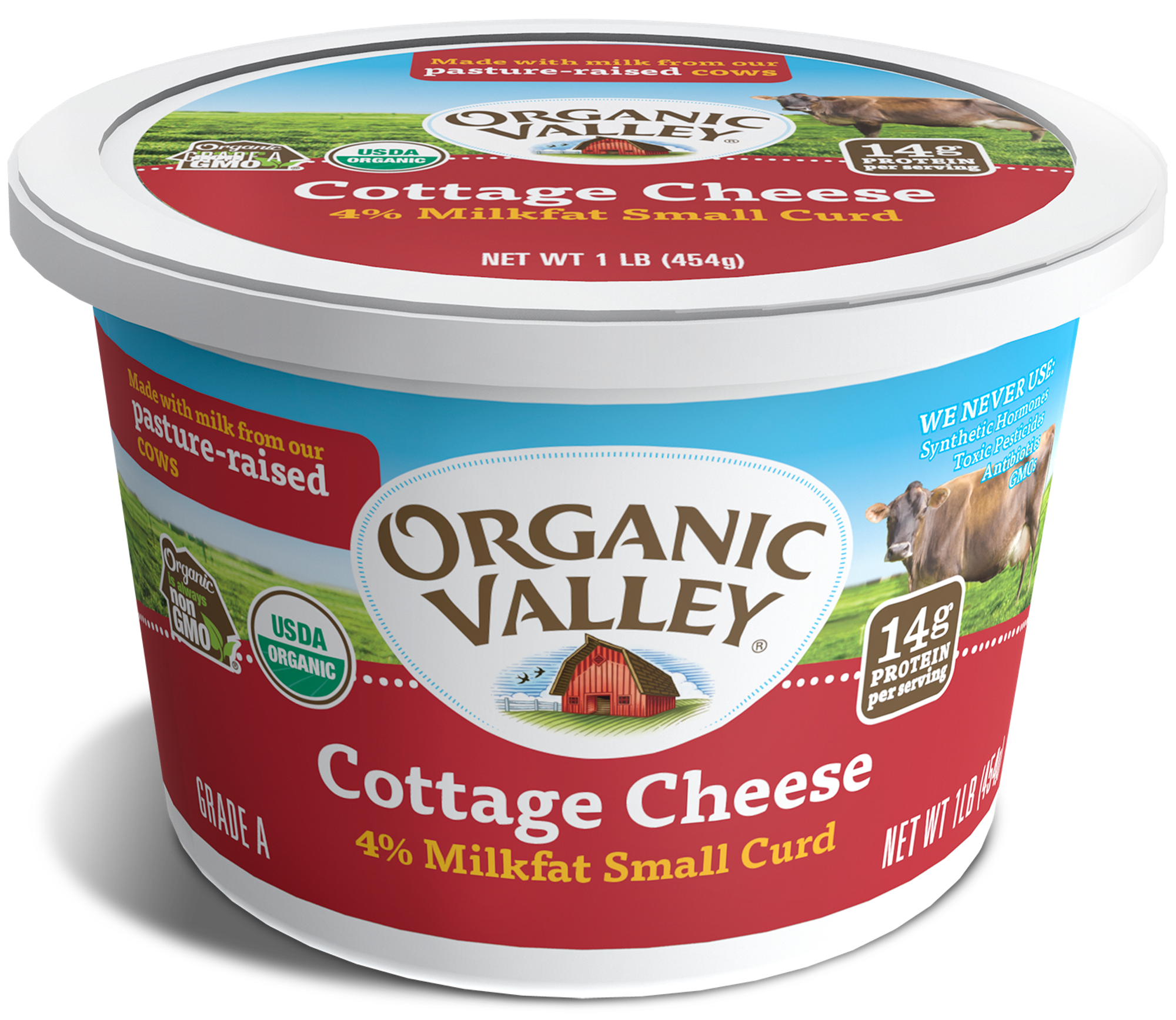
Food
Fighting Global Hunger with "One of the Best Ideas America Ever Had"
“How do you decide, when you have limited resources, who gets to have a meal today and who doesn’t?” This is one of the questions that M.J. Altman and her colleagues at the World Food Program face as they work to find solutions to world hunger.
M.J. serves as the World Food Program’s editorial director and the host of their Hacking Hunger podcast. (Give it a listen if you’re not familiar!) Prior to joining the World Food Program, she worked as a writer-reporter for TIME magazine in New York, where she covered social justice, politics and the environment. M.J. has also worked at the Smithsonian Institution, where she researched, wrote and pitched stories about indigenous history and culture as a public affairs producer.
The World Food Program, M.J. shares, is actually “one of the lesser-known humanitarian agencies from the UN that really is the leading agency fighting global hunger.” Not incidentally, 60 Minutes dubbed it “one of the best ideas America ever had.”
“You hear ‘United Nations World Food Program,’ and you get that they deliver food,” says M.J. What’s not as obvious, perhaps, is that the World Food Program is also responsible for coordinating the delivery of humanitarian supplies all over the globe, helping small-holder farmers grow more crops, delivering school meals to the world’s poorest classrooms, and providing nutrition for pregnant women, nursing mothers and young children, among other things.
Currently the World Food Program is concentrating a portion of its efforts in South Sudan, one of several countries the UN has dubbed a level 3 emergency. “That just basically means it is at the worst levels when it comes to humanitarian suffering, hunger, poverty and instability,” clarifies M.J. “What the world food program is doing right now is literally trying to prevent a famine.”
How do they go about this? And what does it mean for food security worldwide? Listen at the link above, on iTunes, Stitcher, Google Play or wherever you get your podcasts to find out!
Welcome to Rootstock Radio. Join us as host Anne O’Connor talks to leaders from the Good Food movement about food, farming, and our global future. Rootstock Radio—propagating a healthy planet. Now, here’s host Anne O’Connor.
ANNE O’CONNOR: Hello, and welcome to Rootstock Radio. I’m Anne O’Connor, and I’m here today with M.J. Altman, editorial director at World Food Program USA, as well as host of the organization’s Hacking Hunger podcast, which explores hidden, human stories about hunger and food across the globe. Welcome, M.J.
M.J. ALTMAN: Thank you so much for having me.
AOC: I am so excited to talk to you this hour as we explore how food is connected here in the U.S. to other parts of the world, and also how food is connected to other parts of our humanity and housing and, you know, the logistical pieces and the pieces of the heart. I know you have a lot of experience in this with the work that you’re doing now, and I’m wondering if you can start us off by telling us about the World Food Program USA?
MJA: I’d love to, thanks. So World Food Program USA is a nonprofit based right here in Washington, DC, that mobilizes U.S. support and resources for the United Nations World Food Programme, one of the, I think, lesser-known humanitarian agencies from the UN that really is the leading agency fighting global hunger. So every year the World Food Programme, very commonly known by the acronym WSP, is reaching somewhere around 80 million people in 80 countries across the globe, so just an absolutely massive operation that requires a lot of moving parts and a lot of partners on the ground. And it’s just really an amazing story to get to tell to U.S. audiences.
AOC: That is an incredible number: 80 million people being served throughout the world. And do you have a U.S. component? Talk to us about how the U.S. fits into the work of the World Food Programme.
MJA: That’s such a good question. You know, the World Food Programme really wouldn’t exist today were it not for the U.S. The World Food Programme was launched in 1961 and it was really at the request of U.S. leaders like JFK, FDR, Eisenhower, the former South Dakota senator George McGovern. And it’s actually been called “one of the best ideas America ever had.” That’s a quote from 60 Minutes in a piece they did about the World Food Programme.
So our organization doesn’t do any domestic hunger relief. We support the global initiatives of the UN World Food Programme. But that includes a lot of different supporters here in the U.S. So everything from the White House and Congress to corporations like UPS to everyday individuals, like an eighth grader I met last year here in DC who donated his entire annual allowance to World Food Program USA.
AOC: Wow, that is a beautiful story. So yeah, folks, there’s one thing we could do, right? And so, as you go off into these other countries and provide aid, you provide food, you also provide other resources. And I would imagine that you’re working with people like Convoy of Hope and Red Cross and these other agencies too. How does that all work? So how do you work together? Because as you said, 80 million people on the ground, massive operation, you’ve got to have tendrils into lots of different places. How does it all come together?
MJA: So, yeah, the World Food Programme employs 15,000 people all over the world, 90 percent of whom are based in the field in countries where hunger is a massive problem. And not just places that you hear about in the news, like Syria and Yemen, but also in countries like Malawi and Guatemala. And so a lot of it is working with local partners like World Vision, like the Red Cross. And what’s really interesting is, you know, you hear “United Nations World Food Programme,” you get that they deliver food. But the World Food Programme also has what the UN calls its Logistics Cluster, which basically means they are responsible for coordinating the delivery of humanitarian supplies all over the globe.
So it’s a lot of communications, it’s a lot of logistics, it’s a lot of work with government officials to make sure that the UN World Food Programme isn’t just delivering emergency food relief. They’re also helping smallholder farmers grow more crops, they’re also delivering school meals to the world’s poorest classrooms, and they’re providing nutrition for pregnant women, nursing mothers, and really young children as well. So it’s a really multifaceted approach to tackling global hunger, and one that is, as you said, a really massive enterprise that requires a lot of coordination.
AOC: Right. I mean, when we think about the program and how you go into areas that are really in a state of emergency—challenges, flooding, natural disaster, political upheaval, those kinds of things—but you also work with long-term strife, countries who have long-term strife as well, right? How do you decide… There’s so much need. How do you prioritize around the globe and figure out, where do you need to go? And what are the priorities that you’re facing right now?
MJA: That’s such a good question, and I think that’s one of the biggest challenges that my colleagues at the World Food Programme really face, is how do you decide, when you have limited resources, who’s going to get a meal today and who doesn’t? And one of the things that WFP staffers do is they conduct what they call assessments of food security. And 20 years ago that involved going around, sometimes on foot, sometimes on camel, to the most remote villages you can imagine on the planet, with a paper-and-pencil survey, asking vulnerable households: How many meals are you eating a day? How often are you getting dairy? How often are you getting protein? Using a really, very simple armband to measure how malnourished a child was in a household.
And today that’s actually done through mobile technology, so really basic SMS text messages, phone calls. There are still in-person surveys, but that data is really captured in real time. And that is how the World Food Programme sort of maps what are the most vulnerable hunger hotspots in the world, and then allocating their resources to these particular places. But as you can imagine, it’s a really difficult process and one that is constantly changing.
(7:56)
AOC: You know, I was listening to your podcast—which we’ll get to in a little bit here, talk about the Hacking Hunger podcast—and your latest podcast is about South Sudan. Can you talk about what is happening there right now?
MJA: Yeah. South Sudan is one of several countries that the UN has dubbed a Level 3 emergency. And that just basically means it is at the worst levels when it comes to humanitarian suffering, hunger, poverty, and instability. And right now South Sudan, the country, it’s the youngest country in the world, and for the past five years it has been engulfed in violence. And as a result, millions of families have been displaced; smallholder farmers are not able to tend their fields because it is so violent and unsafe to be in any one place for a given time; markets have been disrupted; food prices have really skyrocketed.
And so what the World Food Programme is doing right now is literally trying to prevent a famine. So last February there were several, really some of the hardest-hit counties in South Sudan that were declared at famine levels. And the World Food Programme along with a lot of humanitarian partners like World Vision and others were able to contain it. And at this point the World Food Programme is delivering food to prevent a famine from happening again.
AOC: M.J., I wanted to ask you—I know that you have a background in journalism, that you worked at Time magazine and you covered social justice and environmentalism and conflict. You worked at the Smithsonian Institution, and you researched and wrote and pitched stories about indigenous history and culture. These things all come together, all these issues that you’ve covered throughout your life, come together in food security. And can you explain how that is for our listeners? How did all the things that you have been studying and writing and telling stories about your whole life come together right in the work that you’re doing today?
MJA: My journey has definitely been an interesting one that has led me to World Food Program U.S.A. And, like you said, at the heart of so many social issues, whether it’s poverty or conflict or gender inequality, they really do all come together around food. And one example, gender inequality, what the World Food Programme has discovered is that one of the simplest ways to empower women and girls is to provide food, either in the form of a school meal or a voucher, because it’s able to get girls into the classroom who would otherwise be forced to marry young or be forced to work or take care of the household. And so by providing a school meal, it eases the family’s burden of putting food on the table. It eases that burden of a young girl having to work and earn money or have to marry young because she’s one less mouth to feed in the household.
And when I was at the Smithsonian I worked at the American Indian Museum, and one of the best-known aspects, actually, of that museum is its cafeteria. Mitsitam is the name of the café and they serve traditional Native American dishes representing five different regions across the Western Hemisphere. And I think for a visitor to Washington, DC, for the first time who’s taking in all of this Native American history and culture, one of the most tangible and engaging ways to learn about these different tribes and their different tribal traditions is through food.
And I just think that no matter where you’re from, no matter what language you speak, no matter what you believe, we all need food to live and we all typical enjoy eating food, and it’s a way to bring people together. And so it’s just really wonderful to me to be able to tell stories around food that can also communicate issues that seem a little bit maybe more abstract or difficult, like conflict, like gender inequality.
AOC: I wanted to go back for just a moment to what you were saying about girls and the gender inequality and how that can manifest through food, and how it can be alleviated and solved through the food system as well. One of the things that Paul Hawken, who just came out with a book called Drawdown—Project Drawdown is a collection of all the different ways that climate change can be helped. And his number, I think it’s 5 and 6, is 5 is educating girls, and 6 is providing birth control resources for girls. [On the website, http://www.drawdown.org/solutions, it’s 6 and 7: 6 is Educating Girls and 7 is Family Planning.] And it’s the same concept that you have here. So there’s just all kinds of things that are affected by gender inequality, and when we start to remedy that, a lot of things look a lot different, from climate change to poverty and hunger. So it’s interesting how it all comes together.
MJA: Yeah, I totally agree. And if you’ve heard of the Sustainable Development Goals, that is an agenda that was ratified by more than 130 nations. It’s sort of the United Nations’ big, big wish list for the year 2030. It’s 17 different goals, everything from ending poverty and hunger to making sure education is accessible for everyone, providing clean water and clean air. And again, all of these 17 goals have a really fascinating food component.
AOC: Yeah, you’re talking about zero hunger by 2030, and this is the UN ambitious goal—very ambitious goal! And yet I have heard you say in other areas that this is completely achievable. I mean, it feels so big to me!
MJA: Yeah, and I think before I started working here at World Food Program USA I would’ve have the same reaction. Until I learned that even just food waste—if we were to eliminate the massive amount of food that is wasted every year, you could actually feed all 815 million people who will go to bed hungry tonight. So the U.S. alone throws a third of its food away, and that amount of food could be used to feed the world’s hungry people. And so when you kind of step back and you realize it’s not about producing more food, it’s about accessibility, it starts to seem a lot more achievable. I think the main issue right now are the wars and the conflicts that are preventing people from getting access to food.
AOC: You know, I want you to talk a little bit more about that food waste—I know it’s a passion of yours. I wonder, in the U.S., a lot of times the food waste—and we hear up to 40 percent; whatever the numbers are, they’re outrageous—but in the U.S. a lot of that food waste is post-production, post people buying it, people actually composting or throwing it away in their homes. And that’s not the case in most other countries around the world. Where does that food waste come in, in other places?
MJA: You know, for a lot of the food waste that happens abroad, for poor communities and farmers who tend less than five acres, that food waste, that food loss happens literally on the farm. So a smallholder farmer in Malawi will harvest her crops and then store them in traditional wicker baskets that are really vulnerable to mold and pests and rats. And the result is that the crops will spoil before she is able to consume them, before her family is able to consume them, or before she’s able to sell them.
So what’s really interesting is the World Food Programme is providing, in countries like Uganda, a pilot project where low-cost, airtight silos are being sold to smallholder farmers to replace more traditional means of crop storage. And it’s having an enormous effect on the average farmer’s livelihood, on their daily diet, and actually even on the food prices, the crop prices that they’re able to get, because they can store their crops for longer, they can sell them, they can time that sale much more wisely so that they’re not all flooding the market at the same time and drawing down crop prices.
(17:00)
AOC: If you’re just joining us, you’re listening to Rootstock Radio. I’m Anne O’Connor, and I’m here today with M.J. Altman, the editorial director at World Food Program USA as well as the host of the organization’s Hacking Hunger podcast. Today we’re talking about hunger and what we can do to eliminate it—yes, eliminate it. M.J., I know that you are a storyteller, that you believe in the power of story. Can you talk about the Hacking Hunger podcast?
MJA: Yeah, I’m a huge podcast fan. I absolutely love podcasts. I feel like we’re living in an age where there is a podcast for every single one of us out there. And one of the things that we wanted to do was shed some light on the work that’s being done, the people on the frontlines who are fighting hunger, and not just aid workers or reporters who are covering conflict, but also the families themselves, the people who are overcoming hunger in their own communities. So Hacking Hunger, I think what we’re really trying to do is bring those voices and really raise the profiles of people that you don’t typically hear.
AOC: What’s one of the favorite things that you’ve learned or one of the favorite people that you’ve spoken to on the podcast, and what makes it so?
MJA: Well, actually, the most recent episode featured a logistics officer from South Sudan named Diko. And what’s really amazing about Diko’s story is that she now works for the World Food Programme, but she actually, when she was a child, received food assistance from the World Food Programme. So she’s been on the both sides of that equation. When she was a young girl, the country, South Sudan, it did not exist yet but there was conflict breaking out in what was then known as Sudan, and her family fled the country to Uganda. And she was living in a refugee camp, and she remembers receiving this food from the World Food Programme and thinking, “One day I want to do that. One day I want to give back to someone in need like me and my family.”
And she’s been able to achieve that dream. And I just love that perspective. I think it’s so valuable because she has literally been in that situation and she knows how life-saving that support can be. South Sudan as a country has not even existed that long, but the World Food Programme has been there from the beginning. And when it first gained independence, it was a time of great hope. It was considered the region’s bread basket—really good conditions for growing crops and other things. And today, because of the ongoing conflict, those dreams of a really prosperous nation have not yet been realized.
And what really struck me about my conversation with Diko is how relentlessly optimistic she still continues to be about her country, and this idea that with food assistance can come stability and peace. And I asked her, what would the country look like if the World Food Programme wasn’t there, and she said, “I don’t know that it would exist.”
AOC: So providing key infrastructure, hopefully until the country can get itself in a position to take that up itself, right?
MJA: Exactly. One of the things that Diko’s job really entails is addressing that infrastructure issue that you just mentioned. So there are less than 150 miles of paved road in South Sudan. At the same time, the country experiences an annual rainy season that can last as long as six months. So you have large swaths of landscape that are turned into swamps and they become almost impenetrable by road, so reaching locations is incredibly difficult. So it just goes to show, this is an issue that’s going to have to require a lot of different partners and a lot of work, from building infrastructure to providing tools and training to farmers.
AOC: So the story of South Sudan is one of many stories that you have on the Hacking Hunger podcast. It’s only in its second year; it’s been downloaded thousands and thousands of times. What kind of reception, what are you hearing in addition to that success that you’ve had so far?
MJA: We’ve been really fortunate. We’ve actually raised, through the podcast, about a little over $25,000 in direct donations, which is really incredible when you think about the average cost of a meal for the World Food Programme to deliver. It’s about 25 cents for the World Food Programme to deliver a meal, a school meal in a classroom, an emergency meal to someone in need. And so that, I think, that alone has been really gratifying, just to know that we’re having a tangible difference.
And then we’ve also talked to lawmakers on Capitol Hill who have said, “Thank you for this podcast—it’s really helping put a human face on the World Food Programme’s work.” And that is really something that we are seeking to do, because I think when you talk in these abstract numbers, 80 million people, 80 countries, you can kind of lose what’s at the heart of this mission, which is making sure that someone in need is going to eat today.
(23:03)
AOC: I was wondering, when you had been talking about—and I’ve read this before too—like it takes 25 cents to provide a meal for a child; I read that it takes about $50 to provide a year’s worth of food for a child. How does that work? How can you provide that for such a low cost?
MJA: I think it starts with WFP’s size. They have an incredible economies-of-scale advantage, so they are actually one of the largest purchasers of food from developing countries in the entire world. What they are transporting, they put it in terms of metric tons because you literally cannot comprehend the size of the cargo, the food cargo that they’re shipping. So I that’s one of, I think, the main ways that they’re able to keep their costs very low.
The other issue, too, is that they are providing, by and large, or at least in a more traditional sense, grains like corn and soybeans and various types of maybe lower-cost foods. It’s not like the World Food Programme is providing meat or dairy. But what’s really interesting is, in light of that fact, the agency has actually started to transition towards what they call digital food, where they’re providing electronic, basically debit cards, or “e-cards” as we call them, so that people who are displaced in areas where food production is functioning, where markets are accessible, can actually go into a participating grocery store and purchase locally produced and fresh food to make more nourishing and more traditional meals. And I think that’s just a fascinating sort of evolution in the World Food Programme’s operations.
AOC: We are a country that has so many avenues to try to help. You know, there’s a lot of different apps now where you can share a meal. Tell us what you see as part of this work that you’re doing across the globe. What can we do? What can the listeners do? What can people do who are listening right now and say, “All right, where do I go, where do I take my precious dollars and make the most difference?”
MJA: I love that question. And what you said is so true. We, in 2018, there are so many different ways that you can support this work. Of course, it starts with a donation. So if you are interested in making a donation you can go to the World Food Program USA’s website. You can also download the app that you mentioned, ShareTheMeal. It’s available on any Apple or Android phone, and literally with the tap of a button you can share a meal with someone in need. You can also just share the stories. You can help get the world out. You can write to your congressperson and say, “I want my taxpayer dollars to be going to important issues like this.”
One of my favorite stories from last year, actually, was the couple in L.A. that, when they got engaged, decided, you know what? Instead of having a traditional sort of lavish wedding, we’re going to use our $20,000 wedding budget and we’re going to donate it all to the World Food Programme through the ShareTheMeal app. And it gets even better, because that generosity alone is just, it’s awe-inspiring. But what they decided to do was to start a crowd-sourcing campaign called Million Meals for Love. And what they wanted to do is show [that] everyday people, like them, could have an extraordinary impact. And their names are Poonam and Nishkaam, and I’ve actually had the chance to meet with them and actually share a meal with them, which was really amazing, and they are the real deal.
And a year later their campaign has raised almost $350,000. They just celebrated their one-year anniversary, and we talked to them and we said, “Reflecting on this incredible success that you guys have had, what does this campaign mean to you?” Because it continues—you can find their team on the ShareTheMeal app, it’s Million Meals for Love. And they said, “This is the most meaningful thing that we have done. And the fact that we got to do this together and to start our journey as a married couple this way, thinking about other people and inspiring other people to join this mission, has been so important to us.”
AOC: M.J., thank you so much for joining us today. M.J. Altman, World Food Program USA’s editorial director, thank you for being here. And if our listeners would like to learn more about the World Food Program USA, where should they go?
MJA: They can visit us at wfpusa.org, or you can find us on Instagram, Facebook, Twitter, or you can download the Hacking Hunger podcast on iTunes or SoundCloud.
AOC: Great. Thanks so much, M.J.
MJA: Thank you so much for having me, I really appreciate it.
AOC: And thank you, listeners, for joining us today. Remember, Rootstock Radio is also available on iTunes, Google Play, RadioPublic, and Stitcher. If you haven’t subscribed yet, it’s really easy. Just go to iTunes or Stitcher, search for “Rootstock Radio” and click “subscribe.” We will see you next week.
You can listen to Rootstock Radio on the go wherever you get your podcasts, and find us online at RootstockRadio.com. Rootstock Radio is brought to you by Organic Valley.
